The AMD Ryzen Threadripper 1950X and 1920X Review: CPUs on Steroids
by Ian Cutress on August 10, 2017 9:00 AM ESTRise of the Tomb Raider (1080p, 4K)
One of the newest games in the gaming benchmark suite is Rise of the Tomb Raider (RoTR), developed by Crystal Dynamics, and the sequel to the popular Tomb Raider which was loved for its automated benchmark mode. But don’t let that fool you: the benchmark mode in RoTR is very much different this time around.
Visually, the previous Tomb Raider pushed realism to the limits with features such as TressFX, and the new RoTR goes one stage further when it comes to graphics fidelity. This leads to an interesting set of requirements in hardware: some sections of the game are typically GPU limited, whereas others with a lot of long-range physics can be CPU limited, depending on how the driver can translate the DirectX 12 workload.
Where the old game had one benchmark scene, the new game has three different scenes with different requirements: Spine of the Mountain (1-Valley), Prophet’s Tomb (2-Prophet) and Geothermal Valley (3-Mountain) - and we test all three (and yes, I need to relabel them - I got them wrong when I set up the tests). These are three scenes designed to be taken from the game, but it has been noted that scenes like 2-Prophet shown in the benchmark can be the most CPU limited elements of that entire level, and the scene shown is only a small portion of that level. Because of this, we report the results for each scene on each graphics card separately.
Graphics options for RoTR are similar to other games in this type, offering some presets or allowing the user to configure texture quality, anisotropic filter levels, shadow quality, soft shadows, occlusion, depth of field, tessellation, reflections, foliage, bloom, and features like PureHair which updates on TressFX in the previous game.
Again, we test at 1920x1080 and 4K using our native 4K displays. At 1080p we run the High preset, while at 4K we use the Medium preset which still takes a sizable hit in frame rate.
It is worth noting that RoTR is a little different to our other benchmarks in that it keeps its graphics settings in the registry rather than a standard ini file, and unlike the previous TR game the benchmark cannot be called from the command-line. Nonetheless we scripted around these issues to automate the benchmark four times and parse the results. From the frame time data, we report the averages, 99th percentiles, and our time under analysis.
All of our benchmark results can also be found in our benchmark engine, Bench.
#1 Geothermal Valley Spine of the Mountain
MSI GTX 1080 Gaming 8G Performance
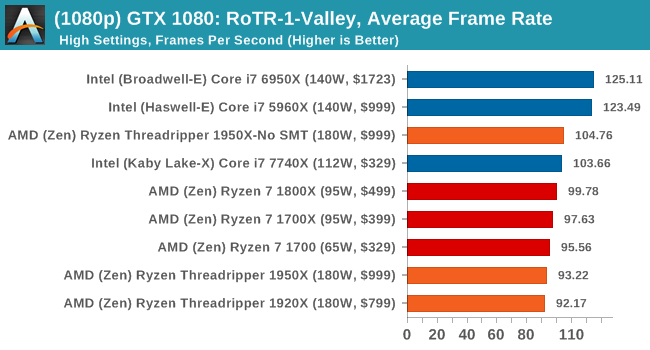
1080p


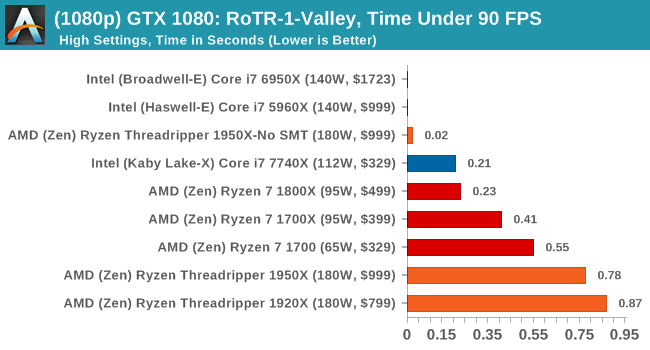
4K
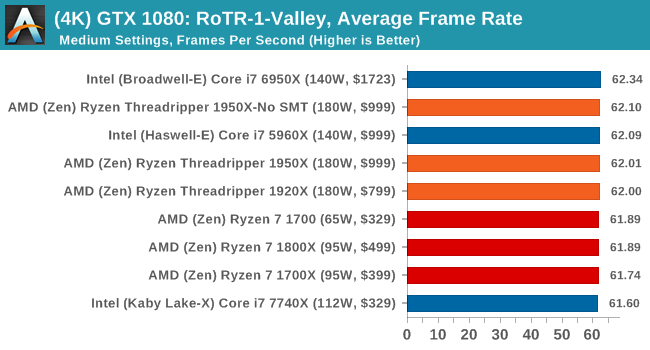

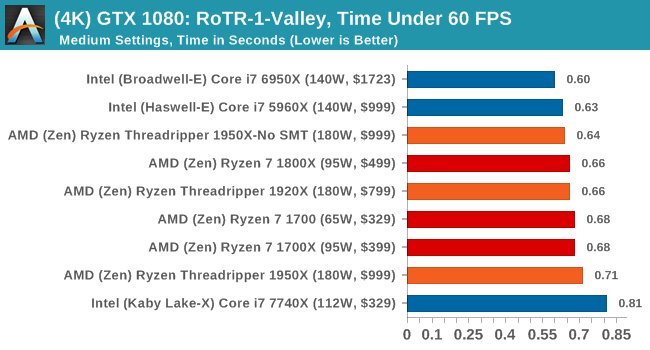
ASUS GTX 1060 Strix 6G Performance
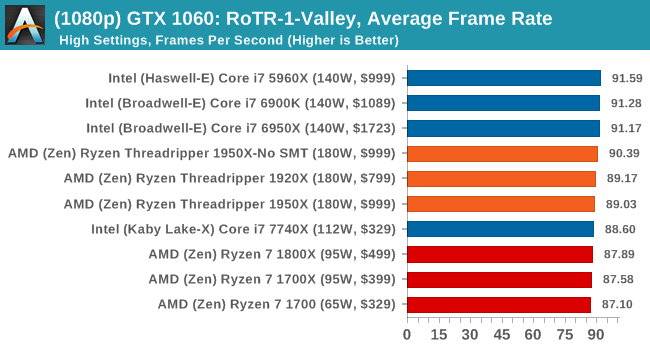
1080p

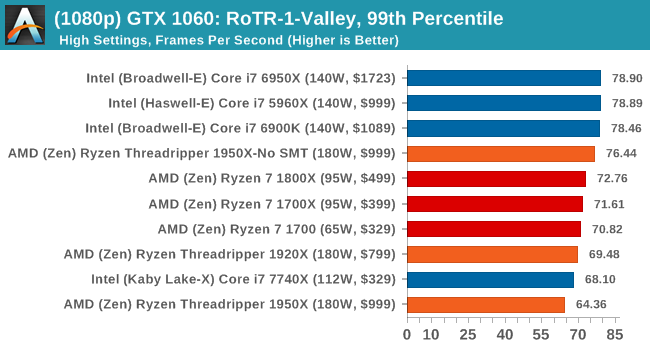
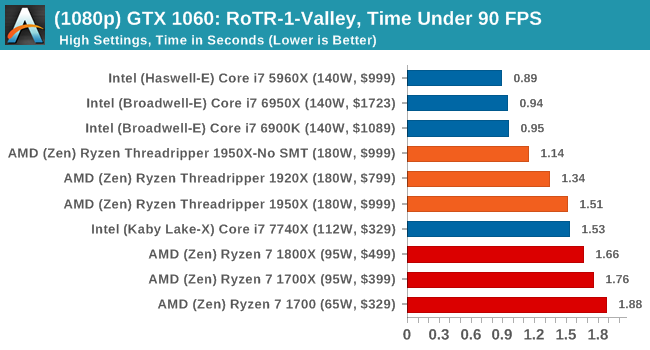
4K
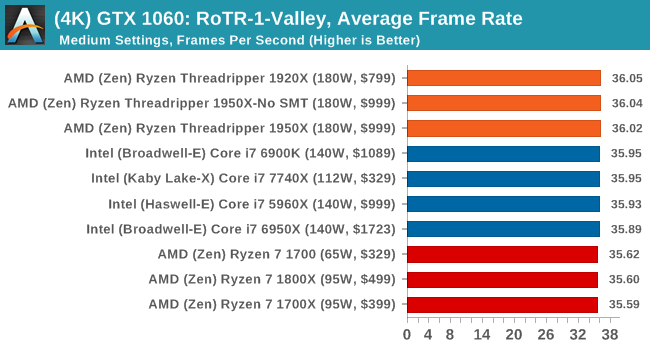

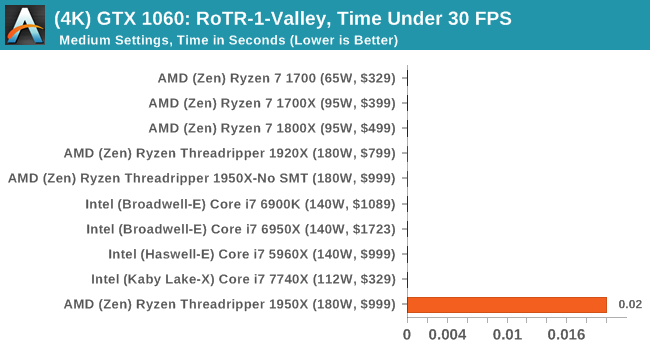
Sapphire Nitro R9 Fury 4G Performance
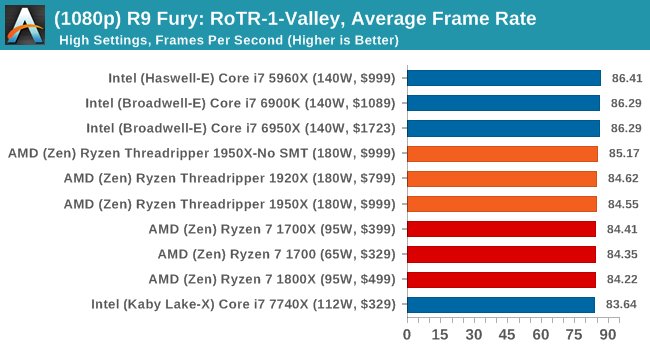
1080p

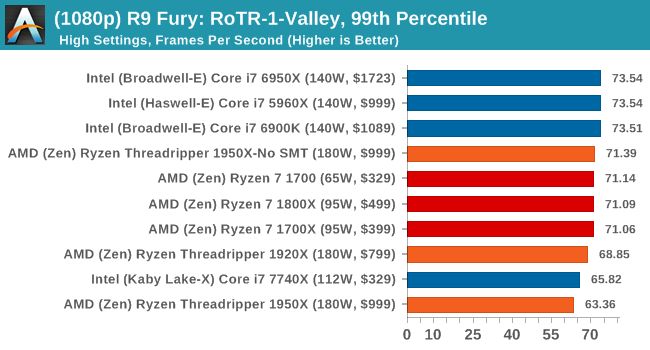
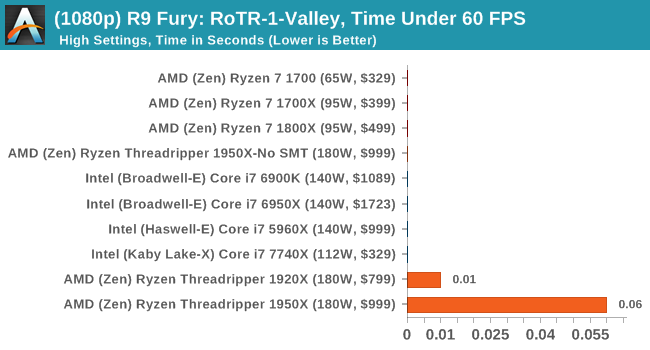
4K
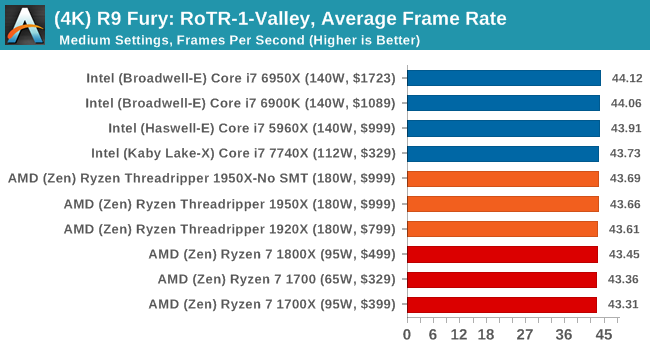
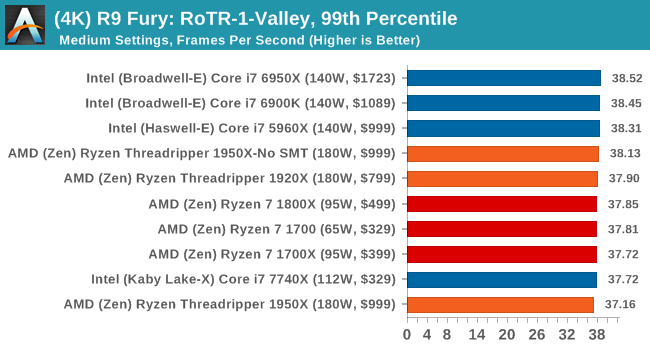
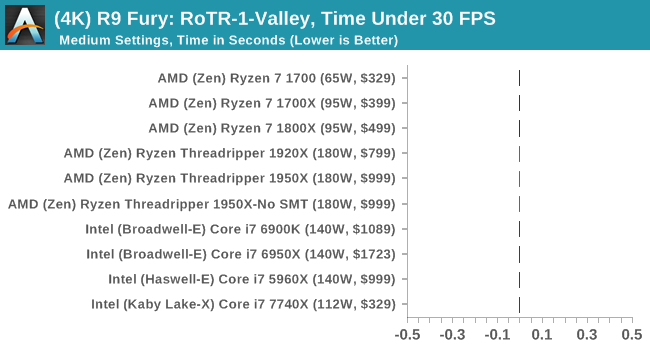
Sapphire Nitro RX 480 8G Performance
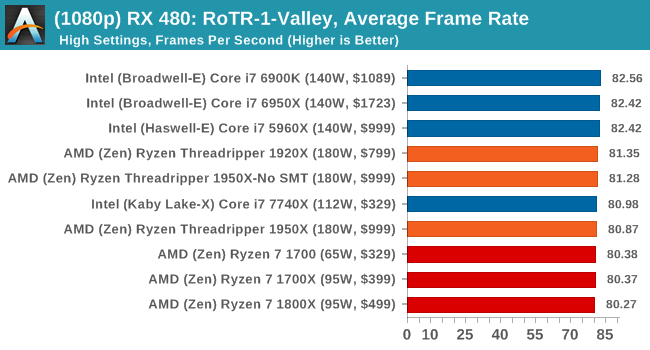
1080p

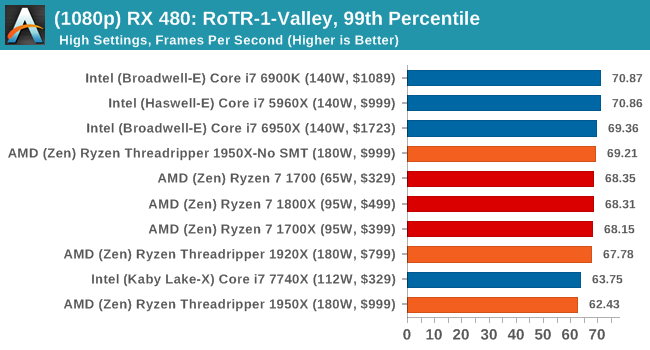
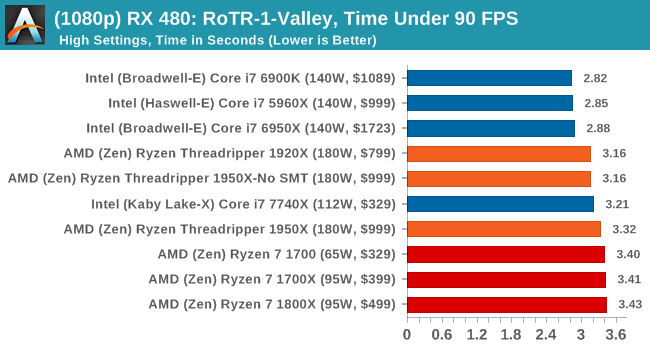
4K
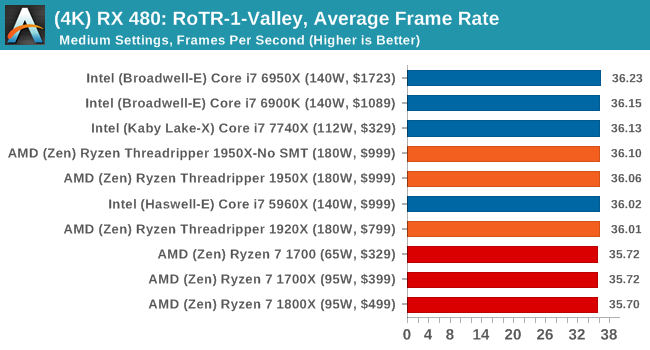
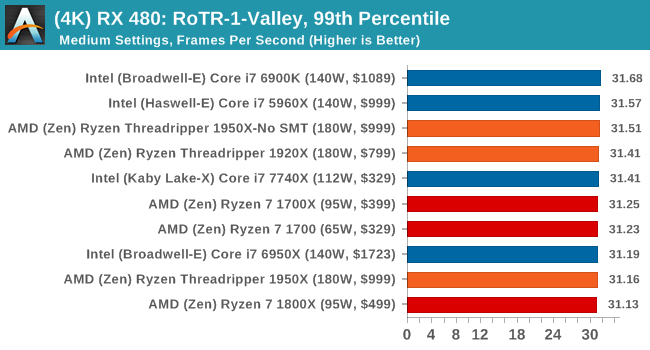
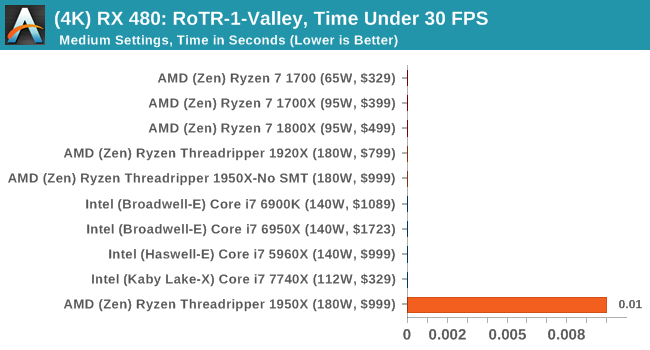
#2 Prophet’s Tomb
MSI GTX 1080 Gaming 8G Performance
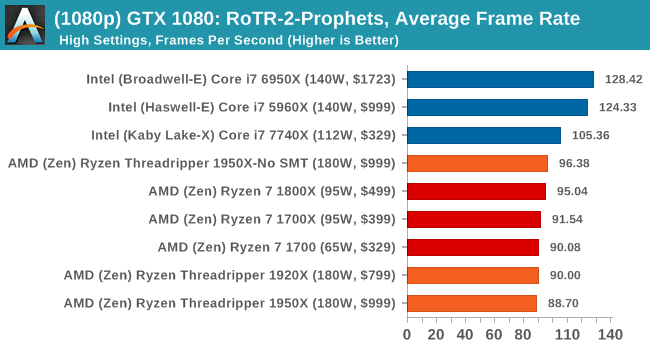
1080p

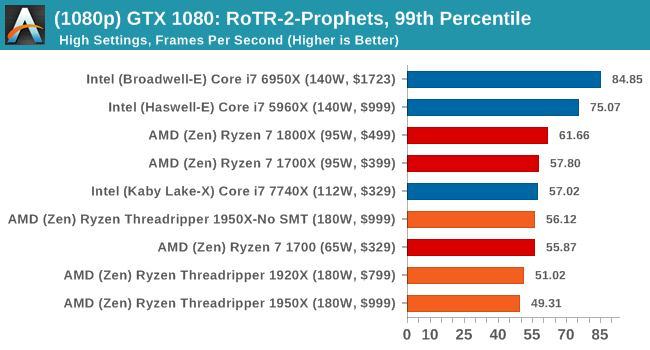
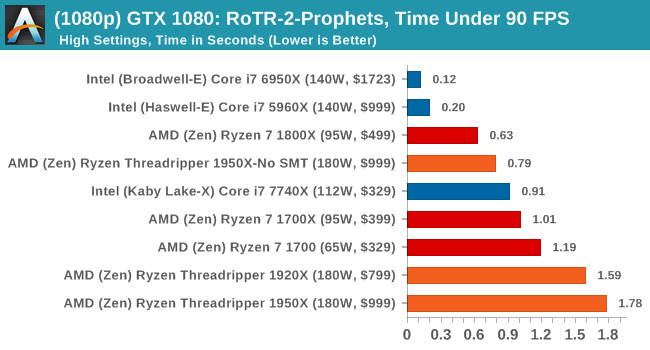
4K
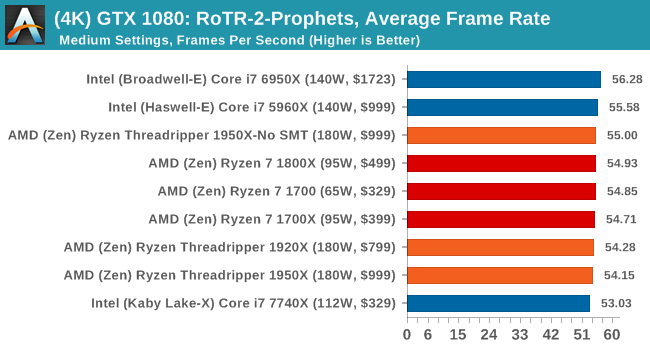
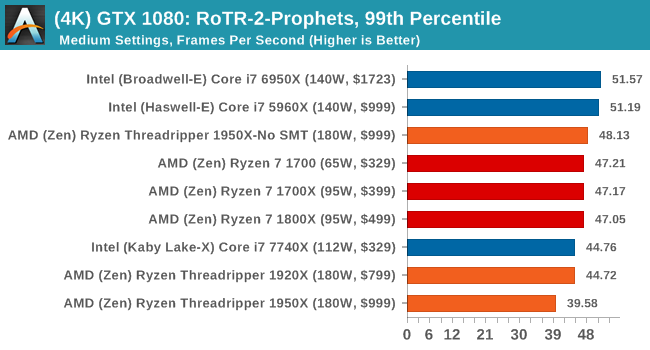
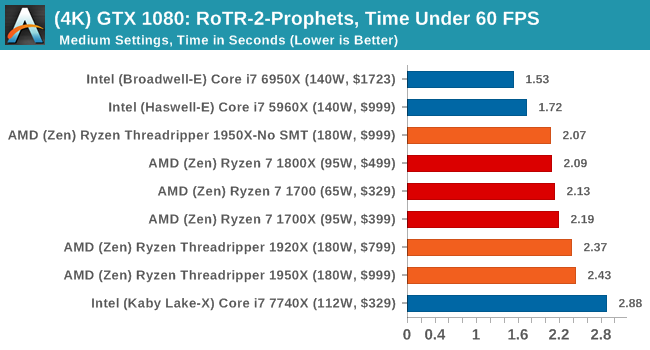
ASUS GTX 1060 Strix 6G Performance
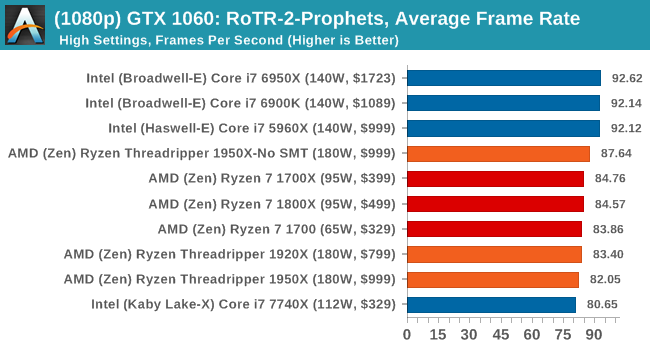
1080p


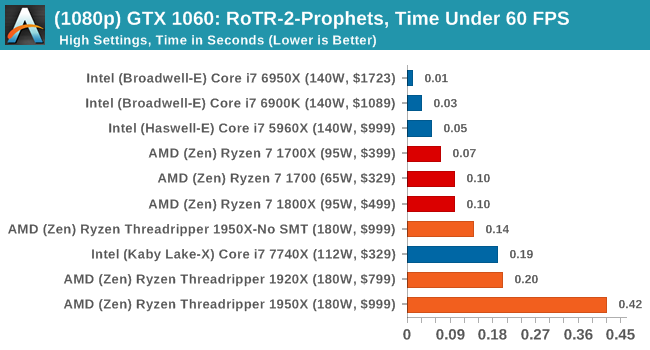
4K
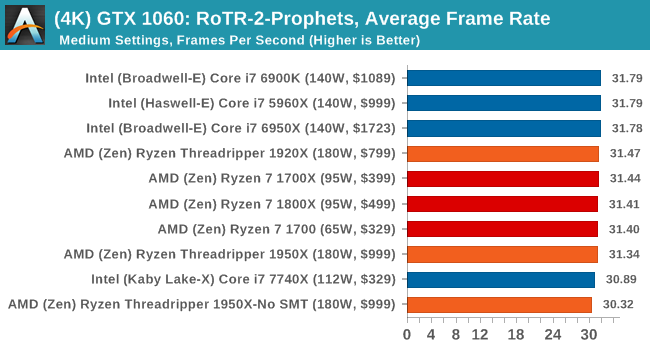

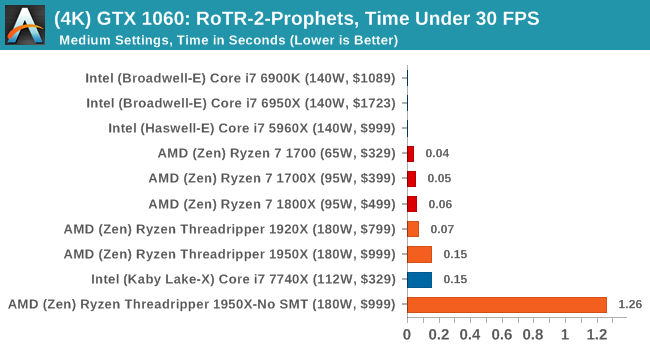
Sapphire Nitro R9 Fury 4G Performance
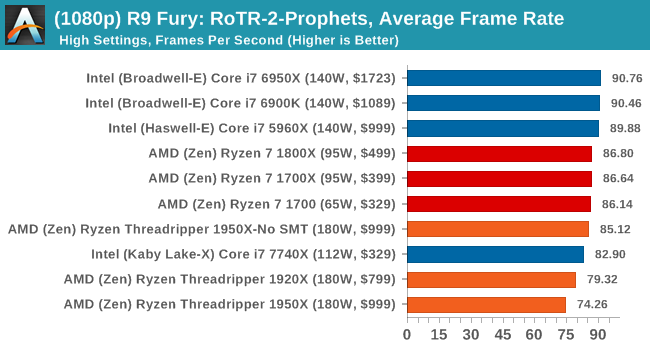
1080p


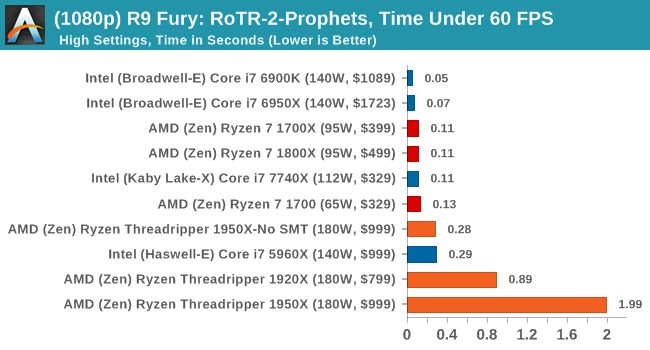
4K
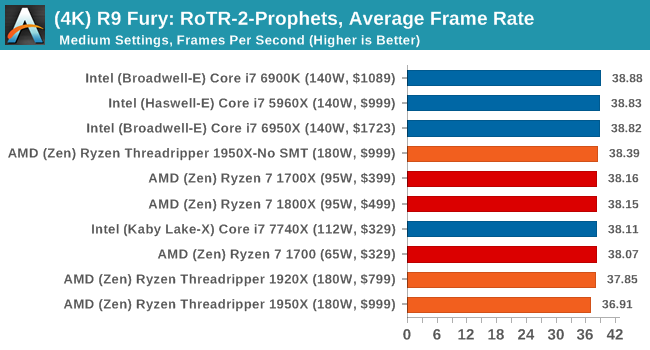
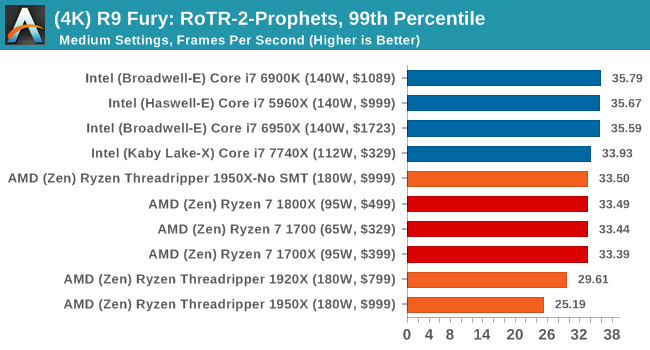

Sapphire Nitro RX 480 8G Performance
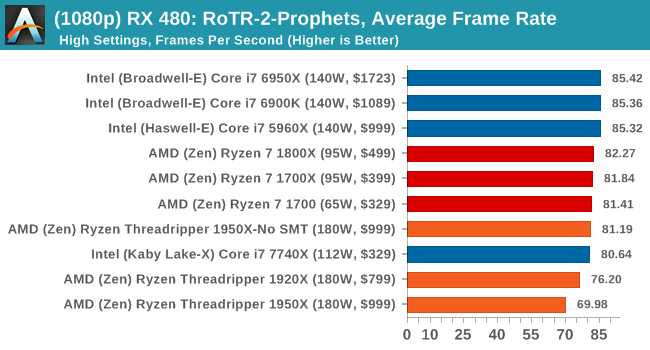
1080p

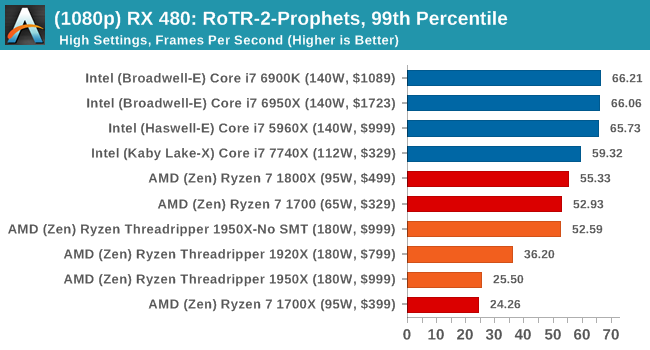

4K
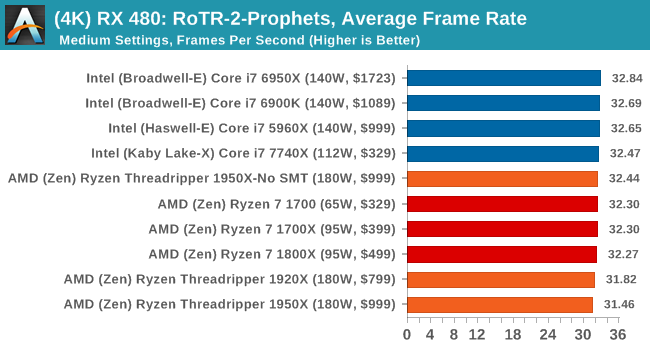
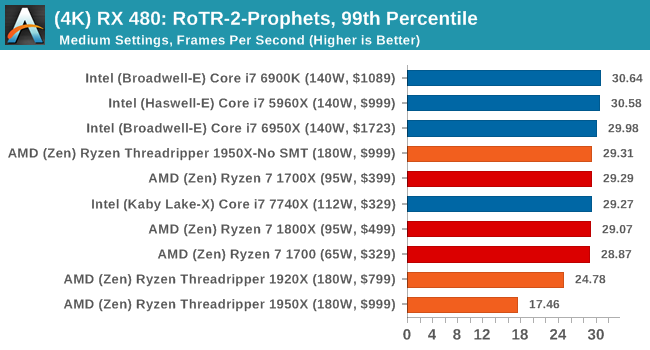
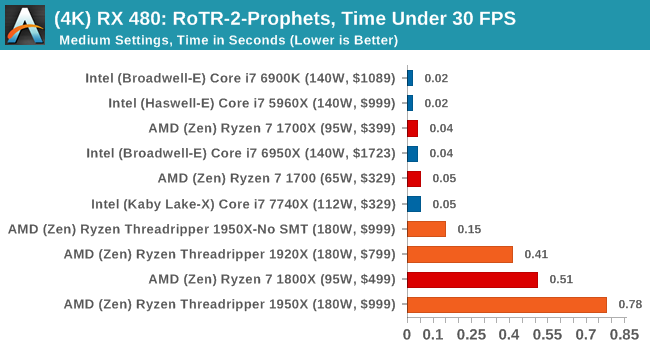
#3 Spine of the Mountain Geothermal Valley
MSI GTX 1080 Gaming 8G Performance

1080p

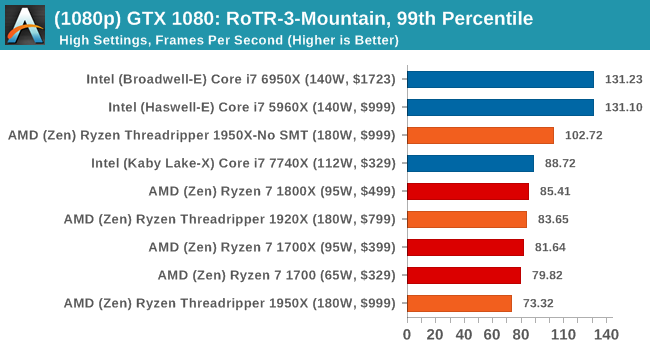

4K

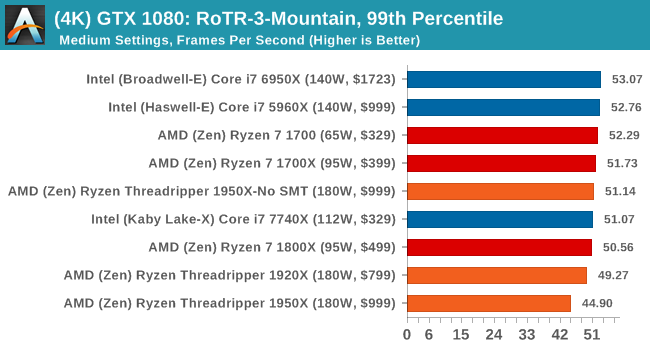
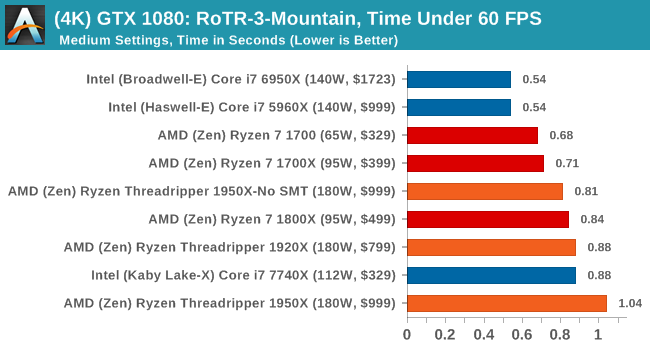
ASUS GTX 1060 Strix 6G Performance
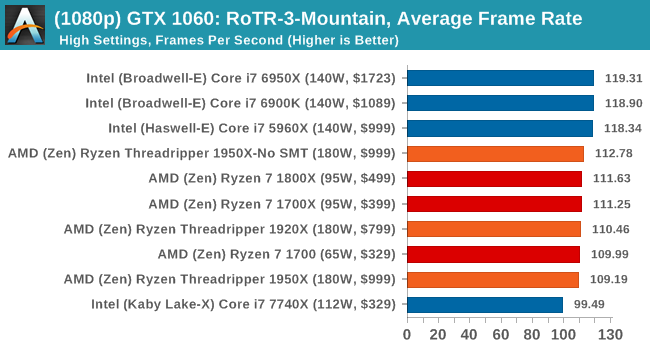
1080p

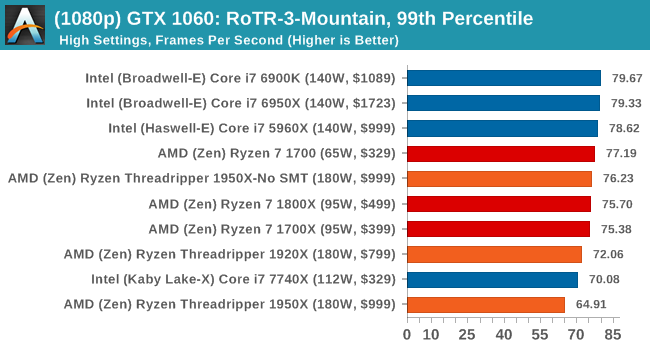
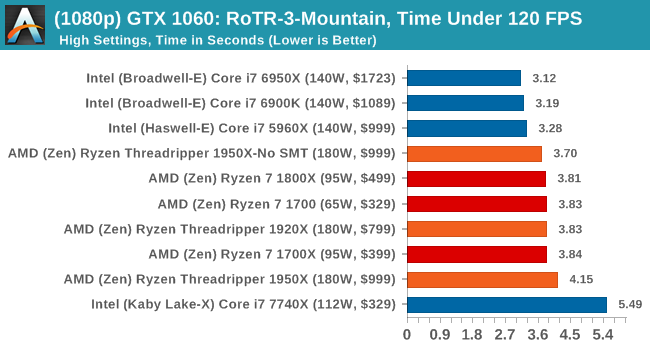
4K
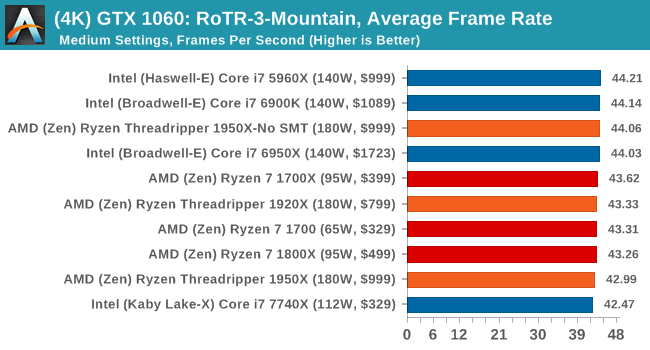
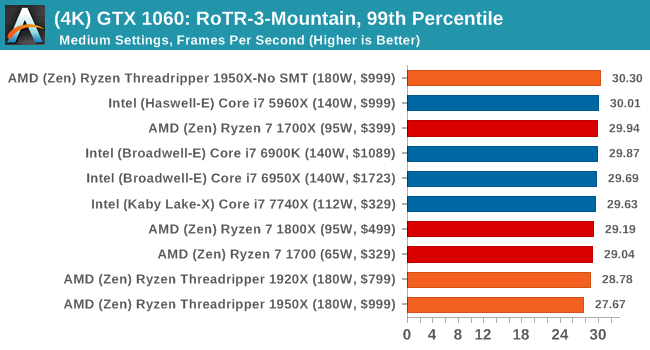

Sapphire Nitro R9 Fury 4G Performance
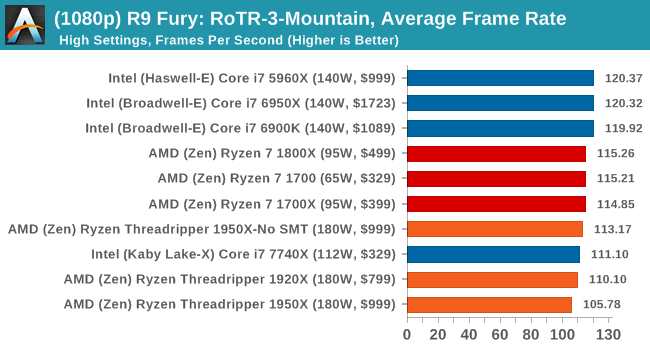
1080p

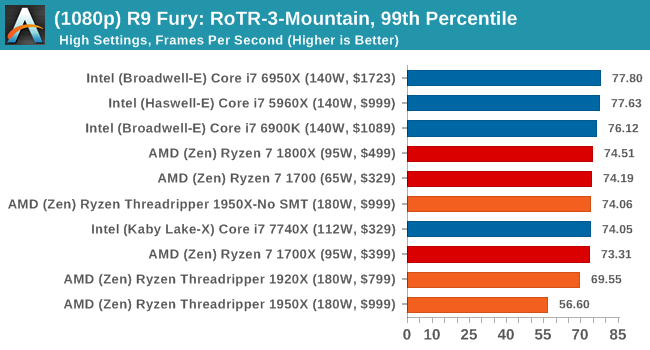
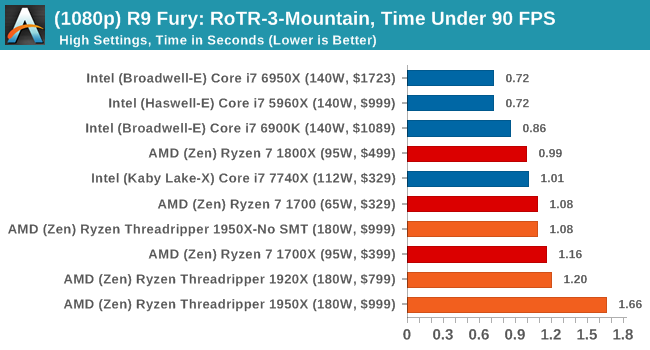
4K
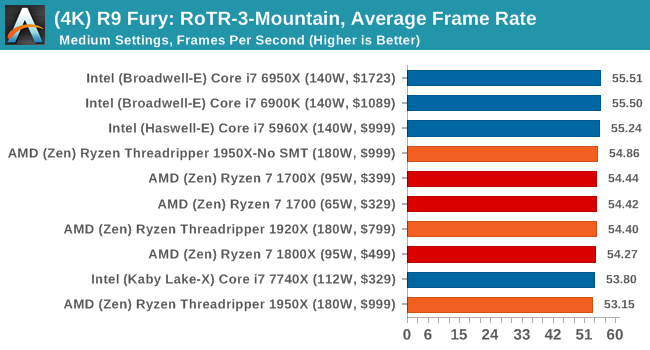
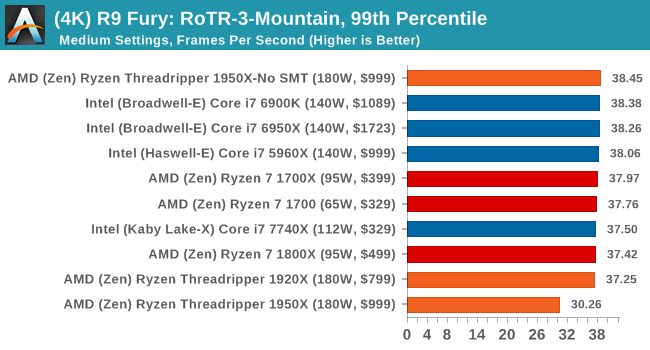

Sapphire Nitro RX 480 8G Performance
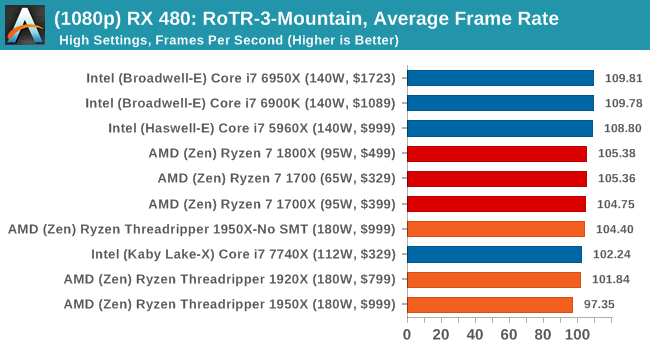
1080p

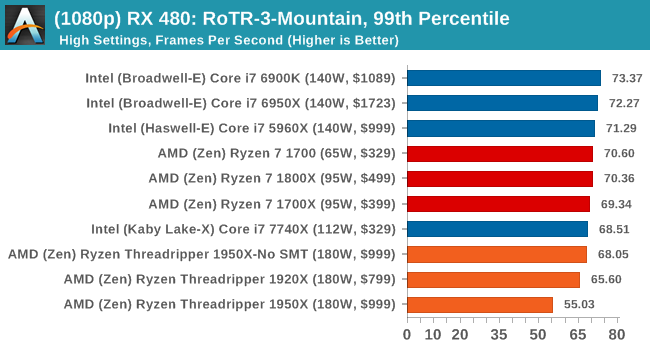
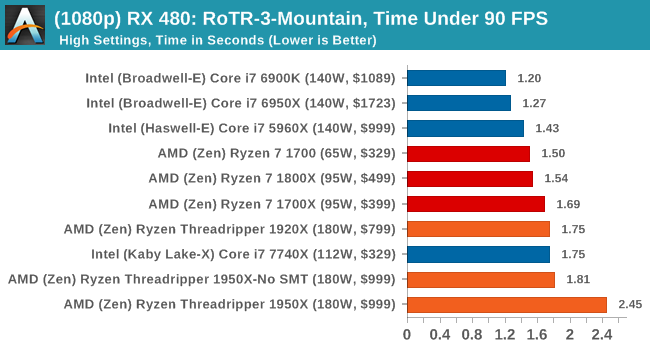
The 4K
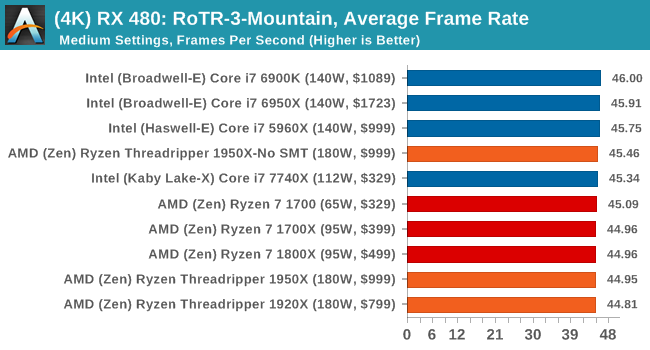
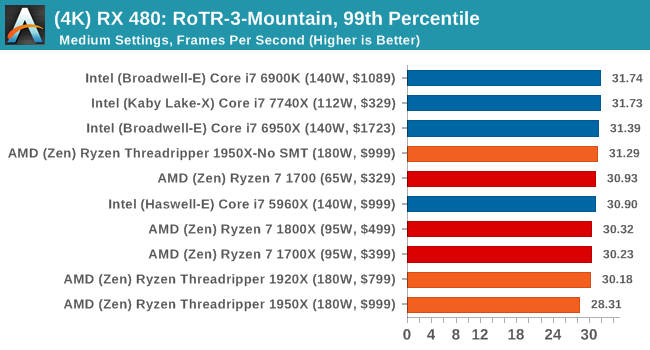
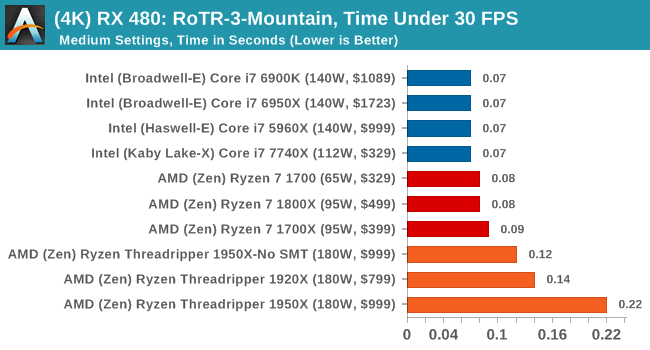
It's clear from these results that the 1950X is not the best gaming chip when in its default mode.


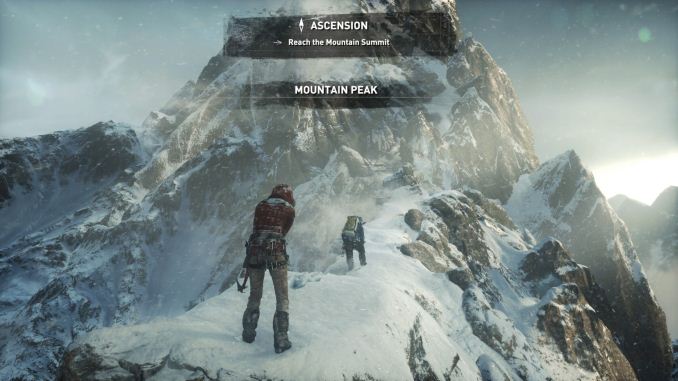
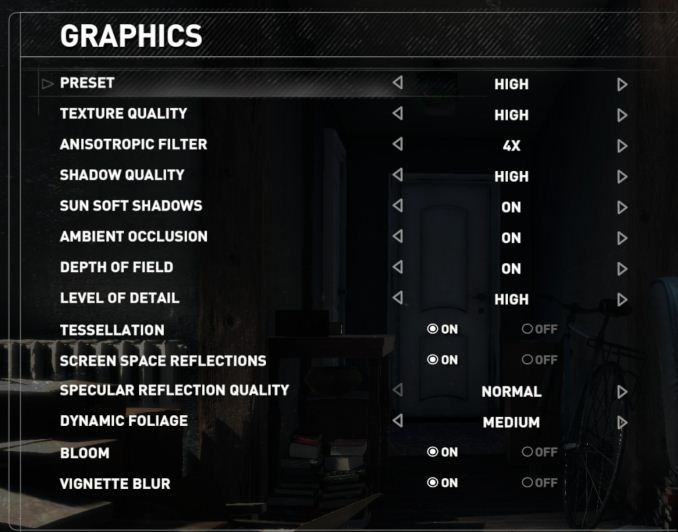
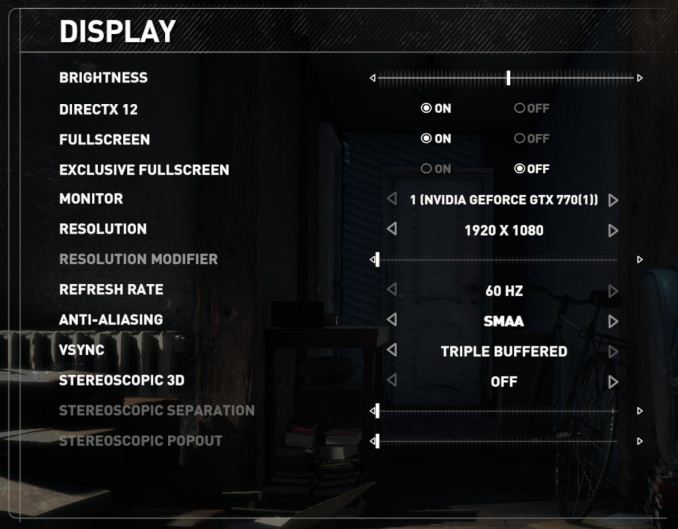
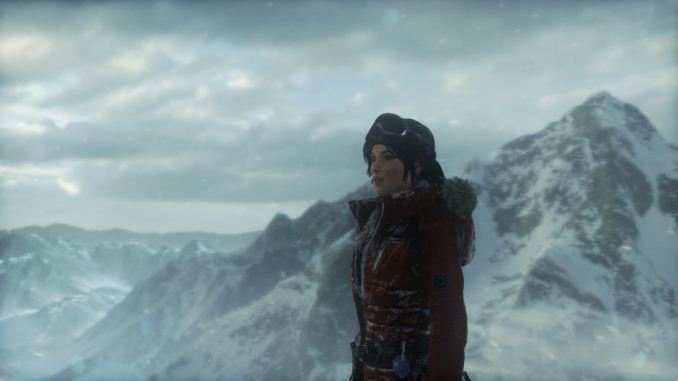
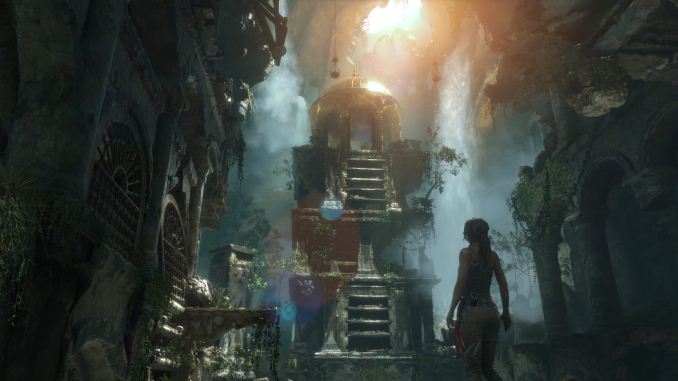
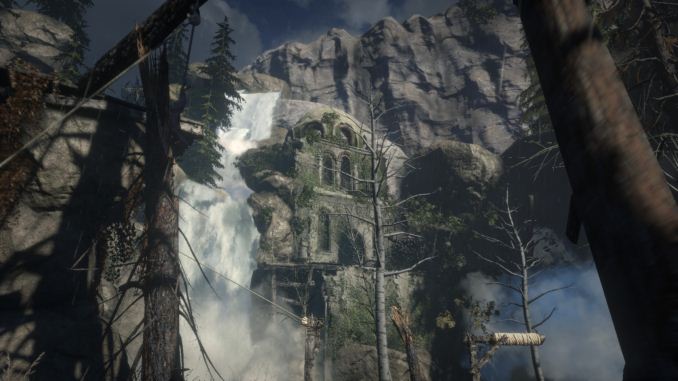








347 Comments
View All Comments
Zoeff - Thursday, August 10, 2017 - link
Yeeeees! Thanks for the review! I was hoping there'd be an embargo lift at this hour. :DZingam - Sunday, August 13, 2017 - link
The best CPUs for MineSweeper in 2017 in a single article!!!!NikosD - Monday, August 14, 2017 - link
Anandtech is simply wrong regarding Game mode or "Legacy Compatibility Mode" as you prefer to call it and make jokes about it.It seems that you don't know what ALL other reviewers say that Game mode doesn't set SMT off, but it disables one die.
So, Threadripper doesn't become a 16C/16T CPU after enabling Game mode as you say, but a 8C/16T CPU like ALL other reviewers say.
Go read Tom's Hardware which says that Game mode executes "bcdedit /set numproc XX" in order to cut 8 cores and shrink the CPU to one die (8C/16T) but because that's a software restriction the memory and PCIe controller of the second die is still alive, giving Quad Channel memory support and full 60+4 PCIe lanes even in Game mode.
And you thought you are smart and funny regarding your Game mode comments...
monglerbongler - Tuesday, July 10, 2018 - link
real renderers buy epyc or xeon. Either they have the money because its corporate money, they have the money because it comes from plebs paying someone comission/subscription money, or they have the money because they are plebs buying pre-built workstations.craptasticlemon - Wednesday, September 13, 2017 - link
Here's the real Threadripper review:AMD thrashes Intel i9 in every possible way, smushes it's puny ass into the dirt, and dances on the grave for the coup de gras. It is very entertaining to watch the paid Intel lackeys here try to paper over what is clearly a superior product. Keep up with the gaming scores guys, like anyone is buying this for gaming. I for one am looking forward to those delicious 40% faster render times, for the same price as the Intel space heater.
alysdexia - Thursday, April 18, 2019 - link
its, shit-headswifter
Dr. Swag - Thursday, August 10, 2017 - link
In paragraph two you say Ryzen 3 has double the threads of i3, I think you mean to say double the cores :)IanHagen - Thursday, August 10, 2017 - link
Not trying to nitpick or imply anything but... There is a logical reason for Threadripper getting five pages of gaming performance review and Skylake-X not even appearing on the charts more than a month after it was reviewed?Ian Cutress - Thursday, August 10, 2017 - link
Bottom of page one.IanHagen - Thursday, August 10, 2017 - link
With all due respect Mr. Cutress, "circumstances beyond our control" and "odd BIOS/firmware gaming results" didn't prevent anyone from bashing Ryzen for its gaming performance on its debut.